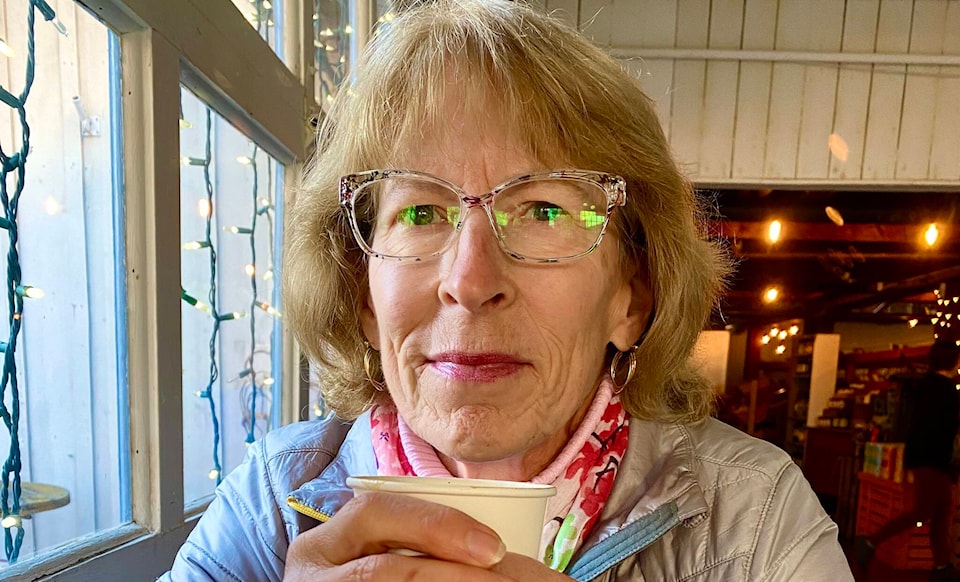This is the first installment in a two-part review of Yellowknife as a tourist destination.
Elated is the perfect word to describe my mood one Thursday evening in August. I was walking back to my Airbnb in Yellowknife, a distance of about five kilometres. My belly was full after a dinner of pan-fried whitefish straight from the Great Slave Lake followed by homemade ice cream at the Sundog Trading Post. My day had included long walks in nature, plenty of learning, meeting friendly locals as well as fellow travellers, and exploring this Canadian city north of 60°. Everything seemed perfect in the world, and I was floating along, feeling my best.
I had just dined at the Woodyard Brewhouse and Eatery expressly to have their whitefish, knowing it would be gluten-free. My day of touring the capital city of the Northwest Territories had not included lunch beyond a small packet of nuts at about noon, so when I arrived at the restaurant at 4 p.m., I was darn hungry. But the dinner menu with the fish I craved wouldn’t be served for another hour. I asked the cheerful server with her dashing splash of pink hair whether it was feasible to walk to Tin Can Hill and return in that amount of time. She assured me that was a perfect way to spend the time and offered me precise directions, even mentioning that she lives up that way.
Morning yoga in my spacious Airbnb suite at Isaiah’s family home had energized my first moments of the day and had been followed by microwave oatmeal with a banana plus an orange. The day’s first rendezvous was at 10:30 a.m., when I planned to meet my new friend, Emily B., for a free tour of the legislature. Emily is a recent transplant to this city, with its rich First Nations history and modern settlement by gold prospectors in the 1930s.
My walk to the Capital Park area of town was via the delightful Frame Lake walking trail, where I exchanged chipper good mornings with cyclists, moms wheeling strollers, and fellow solo walkers. Yellowknife is the name European explorers of the late 1700s gave the local settlement in recognition of the copper tools made by the indigenous Dene people. A trading post was established in the area then abandoned in the 1820s. When gold was discovered on Yellowknife Bay in the 1930s, the tiny settlement became a boom town like the Klondike of 1898. Three gold mines started production in 1938, though development of the area slowed during the Second World War.
In 1944, when gold was discovered on the Ingraham Trail a few kilometres out of Yellowknife, a massive staking boom ensued. Giant Mine began production in 1948 and continued for over half a century before closing in 2004. Seemingly blessed by Mother Earth’s interminable munificence, diamonds were discovered about 300 kilometres north of Yellowknife in 1991, and the city is an important service centre for that industry.
Emily and I both arrived at the handsome legislative assembly building a few minutes early and were ready to join the several other folks gathered, mostly tourists from other parts of Canada. Emily grew up in Ontario, but her husband’s job with the Coast Guard brought them here in May, and she is still getting to know her new hometown. Our one-hour tour highlighted the architecture and art of the building and informed me about the unique legislative process of consensus government, a parliament led by a permanent minority.
All members of the legislature are elected as independents. In Canada, only Nunavut and the Northwest Territories – which split in 1999 to meet the different needs of the diverse populations – have a consensus system of government. It took me a while to understand that unanimous agreement is not necessary for decisions to be made; a simple majority carries the vote. The architects of the innovative building, which opened in 1993, skillfully used skylights and huge walls of glass to remind legislators of the transparency of their actions, while employing a circular chamber to honour the cultural traditions of Northern people.
Our guide pointed out with pride how the builders carefully maintained the trees and landscape surrounding the building, including the peat bog in the foreground and the lakeshore. She invited us to look for the small mammals and waterfowl that can be easily spotted outdoors. Just like well-behaved children at a birthday party, we were rewarded with prizes at the end of the tour. So not only did I have free and educational entertainment, but the Government of the Northwest Territories also saved me about $10 on the cost of the silly little pins I’ve been collecting to decorate my backpack by presenting me with my choice of two pins of the territory and its symbols.
What’s more, the two security guards at the front desk were friendly and open to conversation, so I peppered them with additional questions. Our conversation ran from legislative business to the intricacies of moose hunting and fishing in the lakes here. One of the guys told me his 76-year-old mother, a First Nations member, had been born in an igloo much farther north! Emily and I extended our morning get together by walking the nearby Niven Lake Trail, a charming two-kilometre loop that enchanted me with its cattails and multiple duck families. Soon, Emily bade me farewell, and I headed downtown to check out the YK Centre and shops.
—Susan FitzGibbon travelled to Yellowknife in August, prior to the wildfire evacuation. She lives in the New York suburb of West Orange, N.J., where she is a teacher. Her goal is to journey to all the territories and provinces of Canada.
